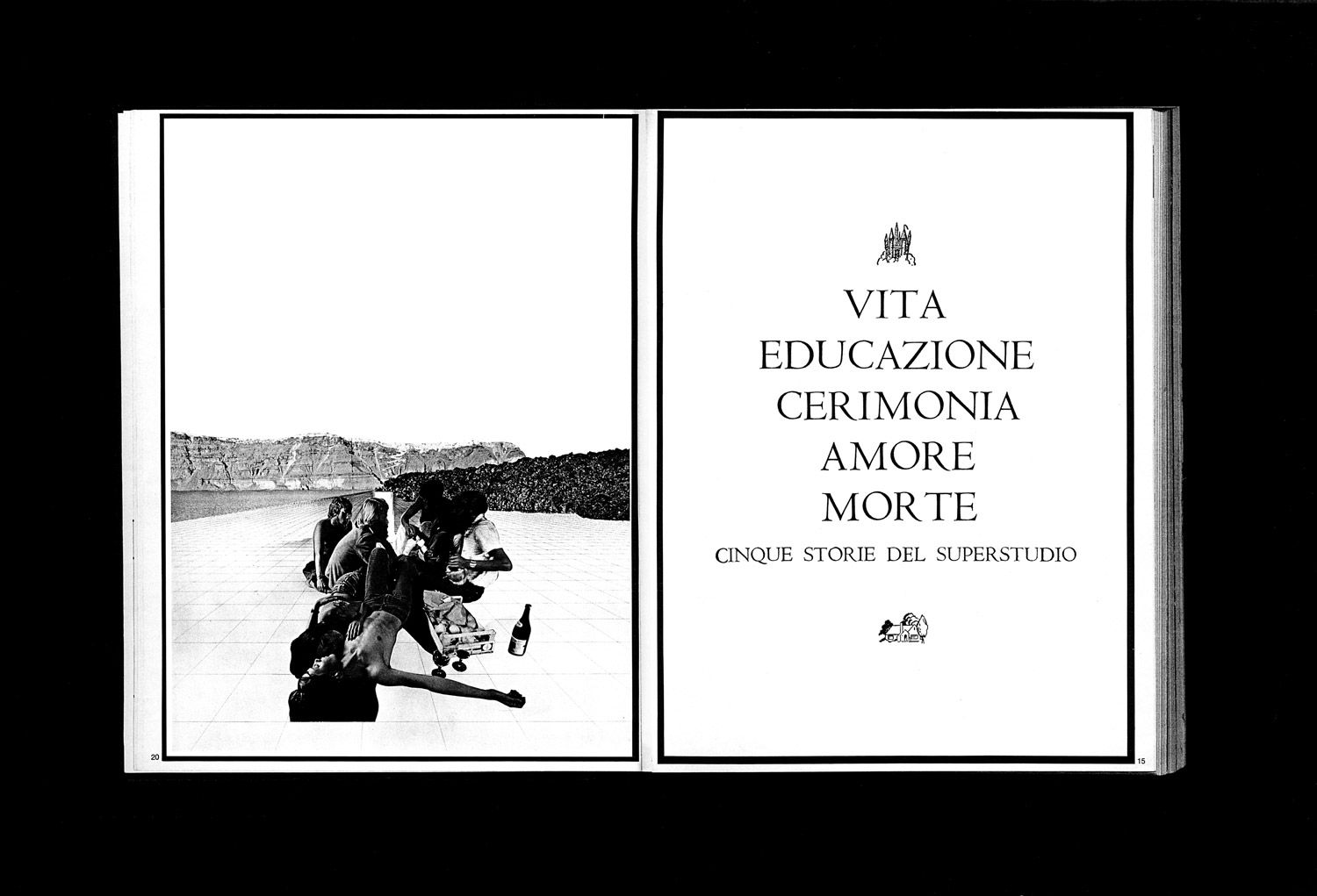ARCHITECTURE POST INTERNET: ANDREAS ANGELIDAKIS in Conversation with Carson Chan
|Carson Chan
For the past two decades, the World Wide Web has redefined what and how we know. We have enveloped ourselves in a thick, electromagnetic fog of information. We are breathing the protocological atmosphere of our own making. We have come to a point where the distinction between real and virtual has completely collapsed, and the resulting terrain is our new home.
For each techno-utopian claim there is a litany of counter claims. The Internet has allowed for individuals to represent themselves online, bypassing more traditionally centralized systems of control. But what of the caveats and conditions that come with online liberation? From what have we been emancipated, and in what are we now entering? As German philosopher and media theorist Byung Chul-han writes, “Today we live in the here and now … We live in times of a complete lack of spatial or temporal intervals, times without distance and without discretion.”
In 032c Issue 20 (Winter 2010/2011), architect Bjarke Ingels said that these concerns were precisely the ones we should be trying to align with urbanism and architecture. What does this new condition – or surround – entail for architecture? Yes, we can list the changes, and coin new names for them (contemporary art has chosen “Post-Internet”), but what good would that do? Due to the logistics of construction, architecture is perhaps the slowest boat to turn, and no amount of digital processing seems to be speeding it up. But perhaps this delayed reaction makes architecture the ideal discipline through which to observe our changing world. Architecture is the lava rock that distills rainwater of its impurities. It patiently absorbs its context, and registers its change in slow but reliable increments.
Although trained as an architect, ANDREAS ANGELIDAKIS has eschewed designing physical spaces. After the economic crisis in Greece derailed his first brick-and-mortar projects, Angelidakis began creating architectural spaces that live as networked environments, navigated through web browsers and virtual worlds. As such, his work has become a meditation on the idea of ruin – both ancient and economic – and the potential of architecture as a site of of real-time social engagement. Angelidakis has been forced to adapt to the collapsing boundaries of physical space, transposing them to and from the confines of our LCD screens. 032c’s CARSON CHAN interviewed the architect.
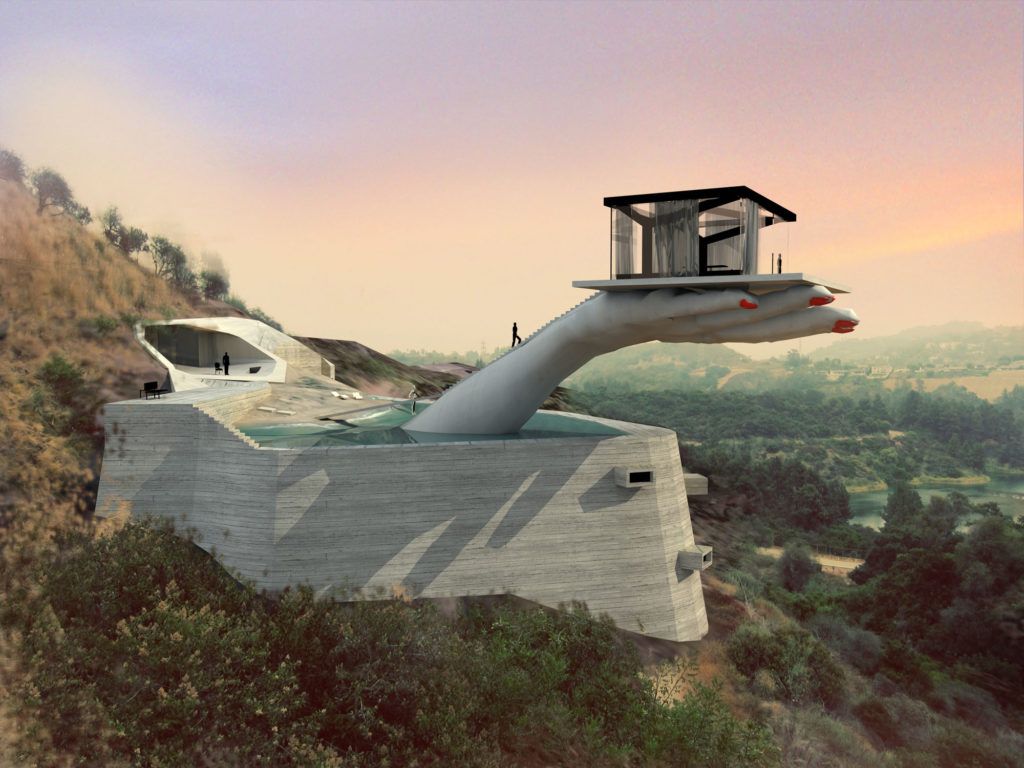
CARSON CHAN: A lot of your work exists primarily in digital form, but you were trained as an architect in 1990s – both at SCI-Arc and at Columbia.
ANDREAS ANGELIDAKIS: When I was studying architecture at SCI-Arc in LA, I hung out more with artists than with architects. The first cultural event I saw was a Mike Kelley performance at Beyond Baroque in Santa Monica. That was my initiation into contemporary art. I was impressed with how artists used their vocabulary. Architects worked with complex objects that were not very expressive, whereas with very simple gestures, or simple objects, artists could convey so much.
What year was this?
I started SCI-Arc in 1989. Then I studied at Columbia in New York, and up until that time, I had not been involved with computers at all. The year I started at Columbia was the first year they introduced the paperless studio. They were the first school to do so, and it doesn’t seem out of the ordinary now, but back then it was revolutionary. They gave us all email addresses and I had no idea what to do with mine. Keller Easterling was my professor, and while other studios focused on form, she had us think critically about the computer and its processes. At the time, everyone at school was playing Marathon, one of the first networked point-and-shoot computer games, and it was amazing to go around the school and see people in different rooms playing with each other. The social potential of the network – of the Internet – really stuck with me.
Would you say that you are more interested in building this kind of sociality as opposed to actual buildings?
For a brief period, my studio evolved into a proper architecture office with employees and interns, and I had four commissions for buildings in Athens. All of them remain unbuilt because of the financial crisis, but this also let me realize that buildings weren’t really for me. They take so long to make, and involve so many other processes and stakeholders to realize. I wanted to play with buildings, but not necessarily build them. I wanted to talk about them or speculate on the ways in which buildings were produced, or think about already produced buildings – how they are and what they actually do. This is why I started exhibiting my work and curating exhibitions.
On the back cover of the catalogue of your current exhibition at the National Museum of Contemporary Art in Athens you wrote about how everything is a simulation – about how the real building is inside the architect’s mind. The material as a simulation of the real – it’s an idealist sentiment that goes back to Plato.
What I’ve found with the few physical projects I’ve completed, is that after putting so much energy into a design, one ends up fighting with contractors and clients to achieve that ideal image in the mind’s eye. On the last day of construction, you photograph the project, and it looks exactly as you imagined. But the next day, when the client moves in, everything is rearranged and things go out of place. The moment that the project represents the ideal project is ridiculously brief. The “real project” exists only in your mind, and the material reality is just different. Not better or worse, but different.
By definition, all buildings are a record of the past. The moment one is “built,” it’s already in the past tense.
And because of the Internet, the moment buildings are published, two days later, they’re an old project. It takes years to make a building, but just days for it to become obsolete. How can we communicate through them anymore? It’s like communicating with cassette tapes.
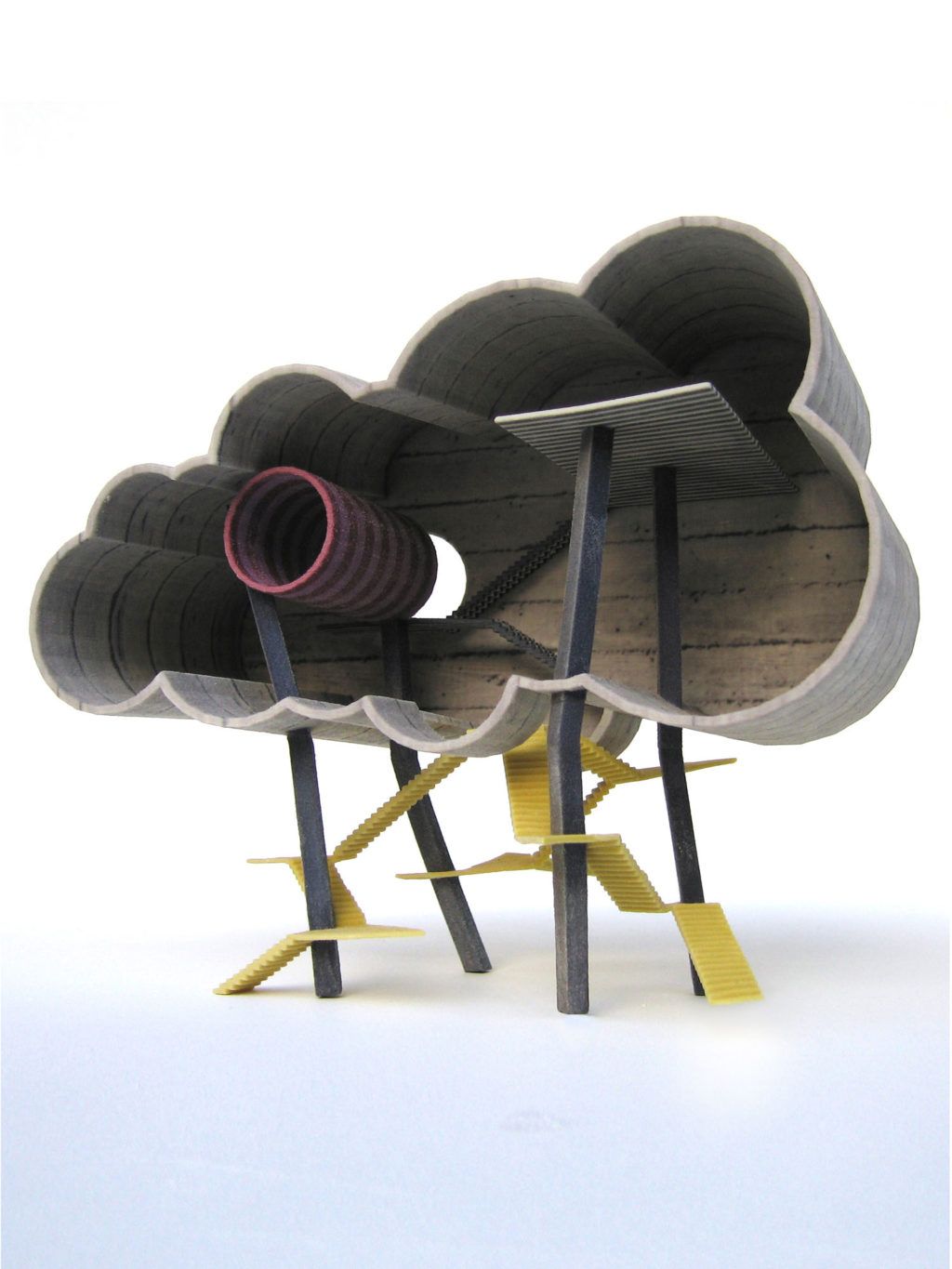
I’ve often thought about how the hyper-circulation of information flattens the past and puts us in a perpetual present. In the past five years or so, artists associated with the so-called “Post-Internet” movement have embraced this condition and its accompanying surreal, mash-up aesthetics. You mentioned that buildings become obsolete the moment they are published, but how else do you think the Internet has changed the way we think about architecture?
In the late 90s, with my friend Miltos Manetas, I discovered ActiveWorlds.com, a 3D, virtual-space online community. What was amazing was that people – or their avatar – would walk into them and give me their opinion. A number of things shifted in the way I saw architecture because of this. For one, if you’re trying to explain architecture to someone through a chat window, and it takes more than five sentences, they are gone. I found that I had to design quickly, and design in a way that was easy to explain. Take the Cloud House (2003). There’s not much explanation needed. It’s nominally self-evident: a house in the shape of a cloud. It was also pretty exciting to have the public watch as I was building. People would engage with me while I was designing, questioning my decisions in real time. It was as though my building’s audience inhabited my drawings.
Did operating on ActiveWorlds allow you think on a different scale than most architects do?
Yes, and in a way, my frustrations as an architect were fulfilled. I didn’t feel the need to prove myself offline.
That’s interesting.
In 2000, I was commissioned to make a project called Teleport Diner by the Färgfabriken Art Center in Stockholm, whose curator, Jan Aman, asked me to make an American diner. We had been in a diner in Brooklyn once, where well-known artists like Maurizio Cattelan, Vanessa Beecroft, and many others were eating. They were sharing ideas and sharing food, and we thought that this was so much better than any exhibition of their work. We called it Teleport Diner and it was essentially a diner in ActiveWorlds where people from Stockholm and Brooklyn (and perhaps anywhere else) could meet. We built a replica of the virtual diner in Stockholm, where visitors could access the equivalent space in ActiveWorlds. It was something in-between, and it was an idea about the world we inhabit: there’s no real and no virtual, it’s always a blur and a mix.
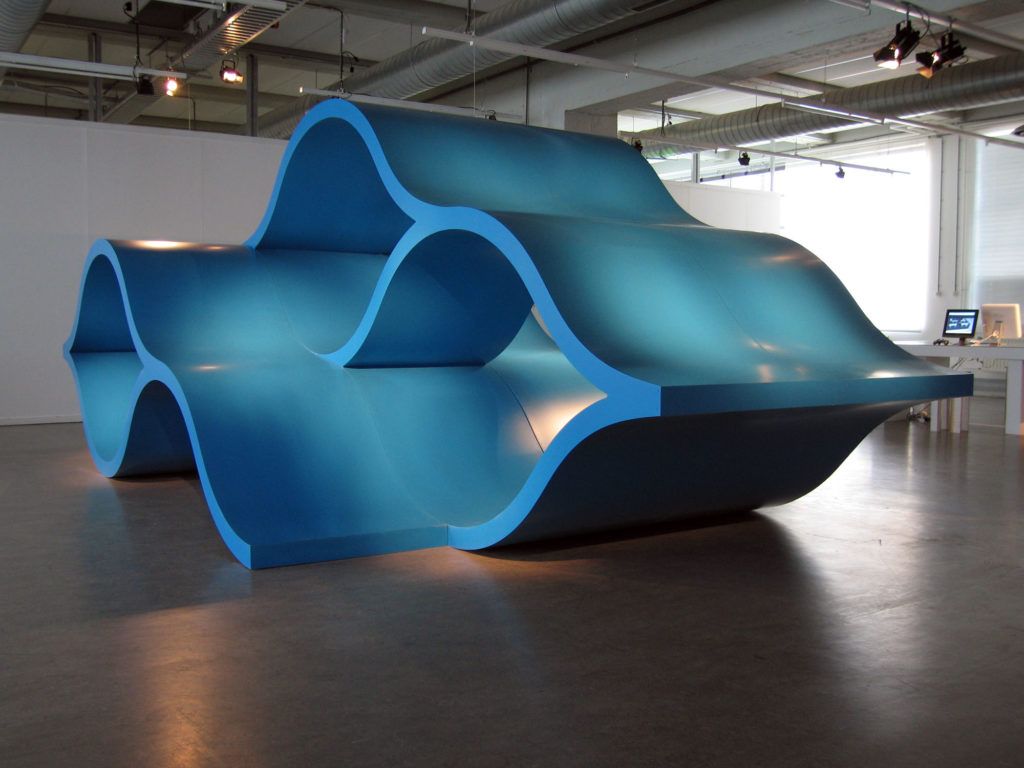
I remember that moment in the mid-2000s when images of the Blue Wave from Neen World (2005) were published all over the Internet. I think people were excited to see an object that was conceived online take on different forms in reality. People saw all kinds of potential in it.
That’s sort of how the Internet works.
What do you mean?
Things – images, ideas – become viral and there is no way to control how they are presented. The same thing happened with Hand House (2011). It was re-blogged from my Tumblr something like two thousand times, but people didn’t know what it was, what it was about, or who made it.
Greece itself plays an important role for you, in the form of ruins and nostalgia. You once described ruins as things that “interrupt our normative sense of time.” You said that they necessitate a flattening, or reversal, of a normal sense of time – something the Internet does as well.
Ruins are the opposite of new buildings. A new building exists only between the moment when construction ends and the client moves in. A ruin is the opposite: it is a building that accepts its imperfections and failures, and it’s a record of that history. Photographs of ruins question the validity of a new building, but of course the Internet has completely changed our conception of the new. Images of brand new buildings circulate immediately, along with images of old ones. We don’t concern ourselves with the “new,” but with the “interesting.” The reason I came back to Greece after my time in America was that I was more emotionally connected here. I was pulled by the nostalgia that Greece has as a country. It’s a country based on nostalgia. Of course, then the economic crisis happened and you could see Athens literally transform over the course of half a year.
Transform physically?
Yes, physically. Walking around Athens, you can see that half the shops are closed, and everything is for rent.
The Athens Marina (2009) project was a reflection on these conditions, right? It’s kind of a ruin in reverse.
Athens Marina was an art competition launched by Dakis Joannou. The competition was for the marina where he keeps his boat – the one designed by Jeff Koons. I thought, “What could be the opposite of this shiny, luxury object?” My proposal was a ruin in reverse in that it anticipates rising sea levels. The roof of the structure has a palm tree, so that when the sea level rises, it will look like an island with a tree on it. Time is flattened, yes, but there is something timeless and ancient about ruins. When I had access to a 3D printer, I printed out Le Corbusier’s Domino House (1915), made out of bones.
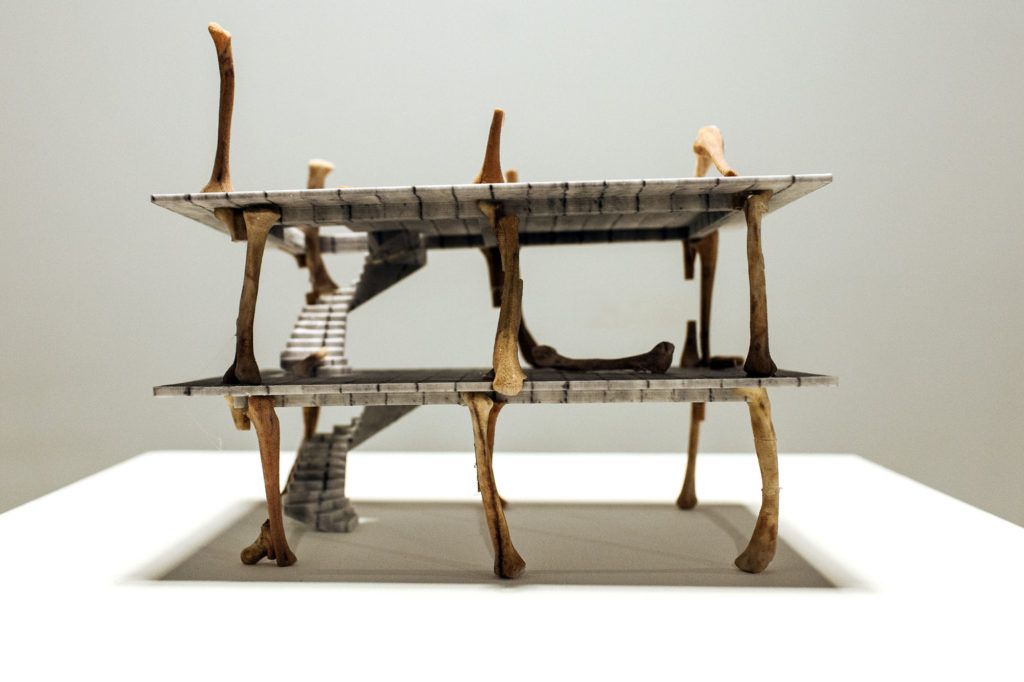
The Domino House is an interesting figure because it was a structural system meant to stimulate the economy, by offering a model of economic efficiency. Recently, in my travels in Greece, I saw all these “domino houses” everywhere: half-completed projects that remain as concrete frames in the landscape.
One reason why Greece has all these incomplete structures is the economic crisis. Another reason is a Greek law that allows for structures built to the second floor to remain, even if the owner doesn’t have a building permit. People would build these two-story concrete frames as placeholders for future projects. Most of the time, they either ran out of money to finish the project, or the building was never intended to be finished immediately.
You’ve made these concrete frames into pillows, and I was wondering if you were suggesting a way in which we could deal with these structures. They are kind of non-places – not nature, not completely built.
I see them almost as almost natural objects – like rock, like stone. The pillows were an early attempt to combine the ruin and the Internet. In 2007, I made a video in Second Life where I was trying to teach these concrete frames how to collapse and become a ruin. By altering the physical parameters of Second Life’s virtual environment, you can make the buildings tilt and crumble. These virtual buildings normally never grow old, they stay exactly the same once you’ve designed them. So I made an electronic ruin, and when I translated that into a gallery space, I made these ruins into giant pillows – a play on their softness, and their origin in software.
We talked about how the Internet has reorganized the hierarchies of our pre-Internet world – that time, values, and space are all apprehended not based on quality, but on what draws our attention. You mentioned too that the “new” is no longer a value we care about. If we live in a perpetual present, what happens to our models of progress?
That I don’t know. I think the idea of progress is kind of old-fashioned. The idea of the future is itself old. It’s expired in the sense that we don’t find the idea of imagining the future fascinating anymore. It’s a threatening future now, whereas the fascinating future was in the 1960s. People were imagining going to the moon and living like the Jetsons. Now, the future is much more kind of a question mark rather than anything else. I guess I’m in no way trying to predict progress, or propose the new “new.” I’m much more interested in the flattening of time – in timelessness.
Credits
- Interview: Carson Chan

